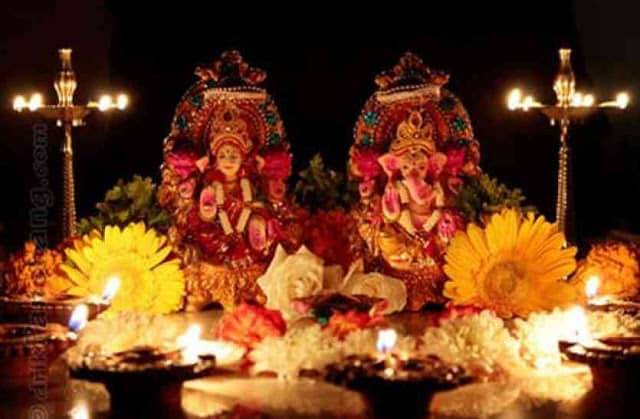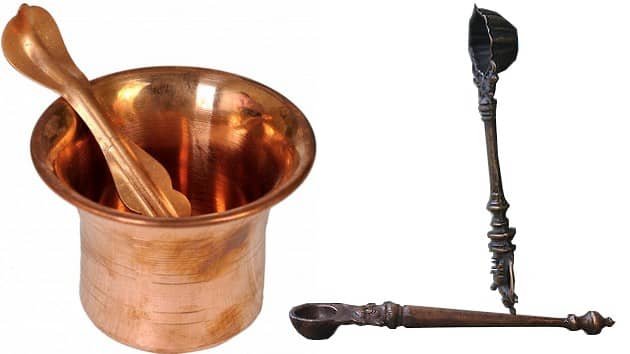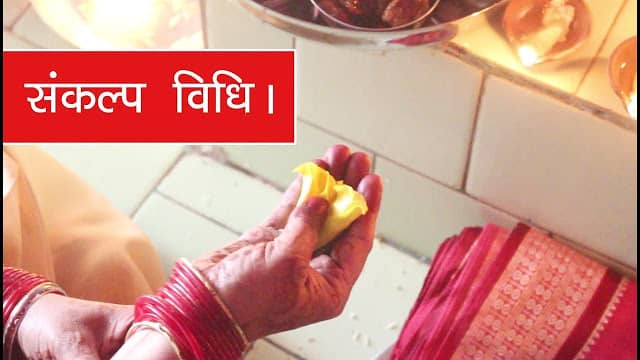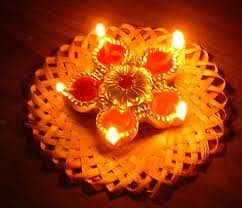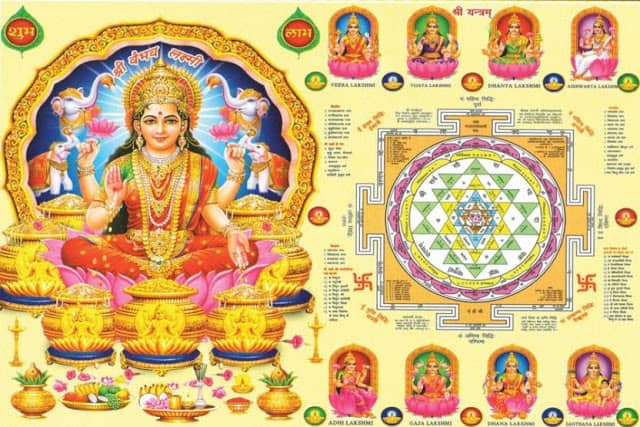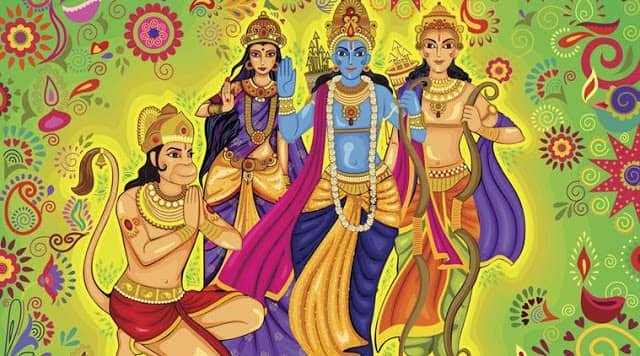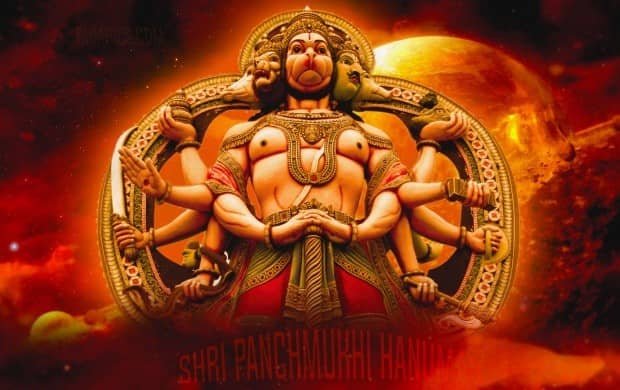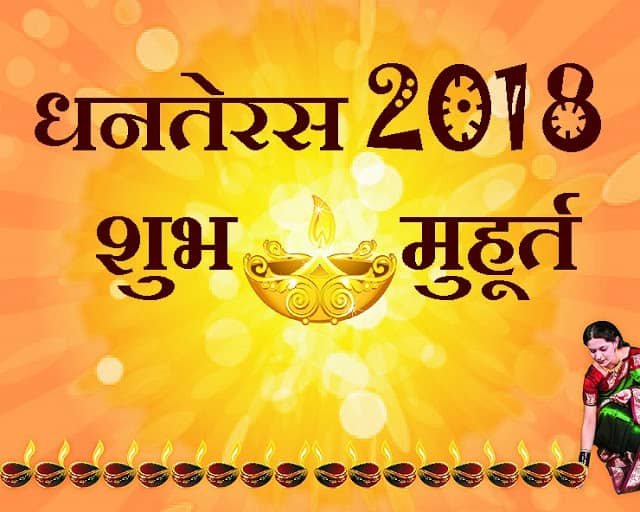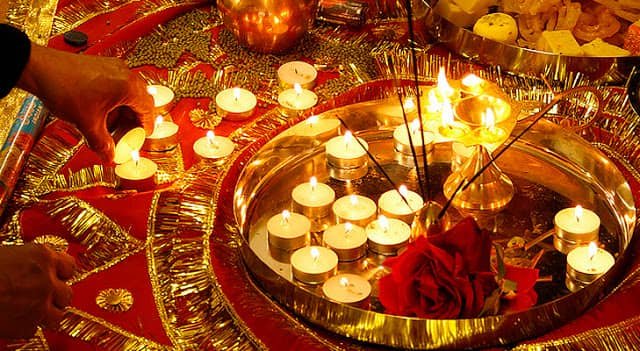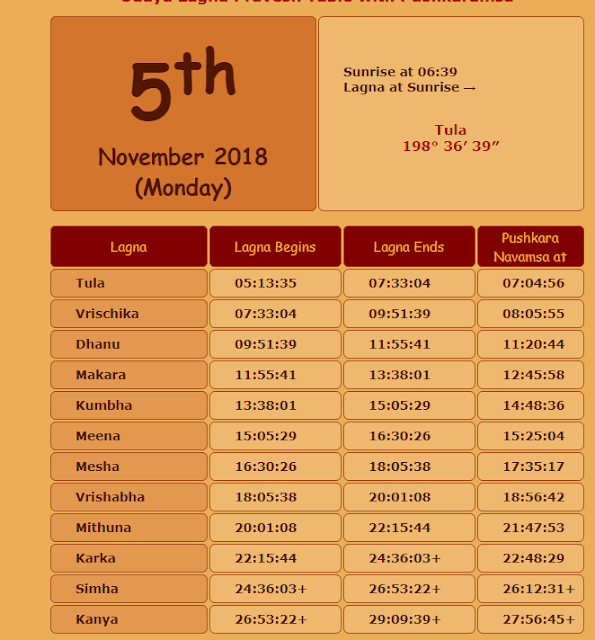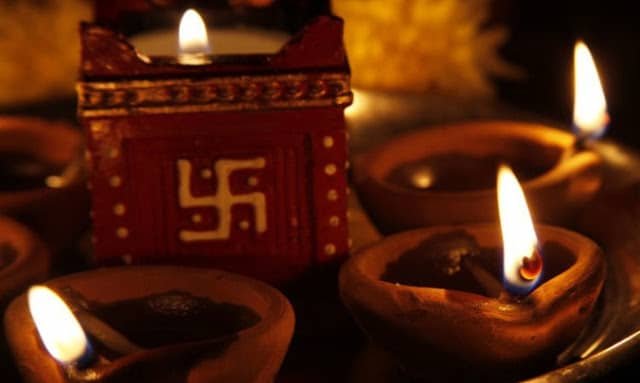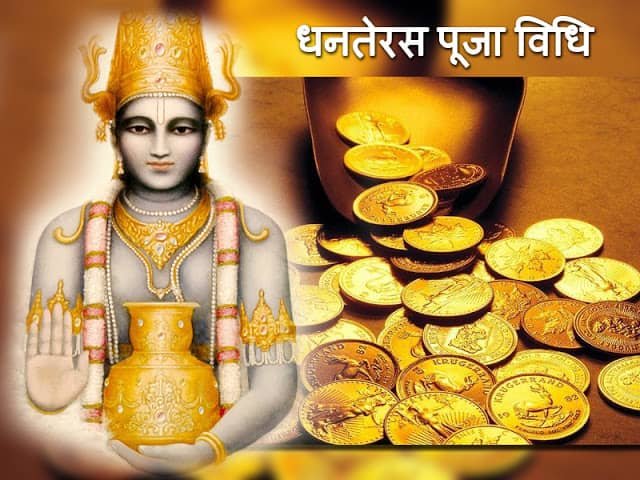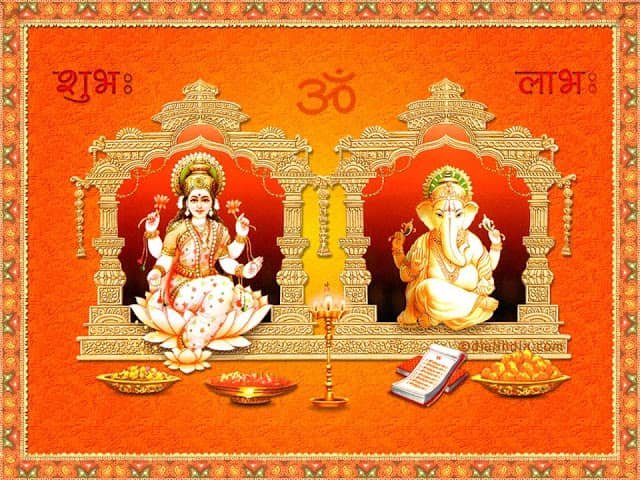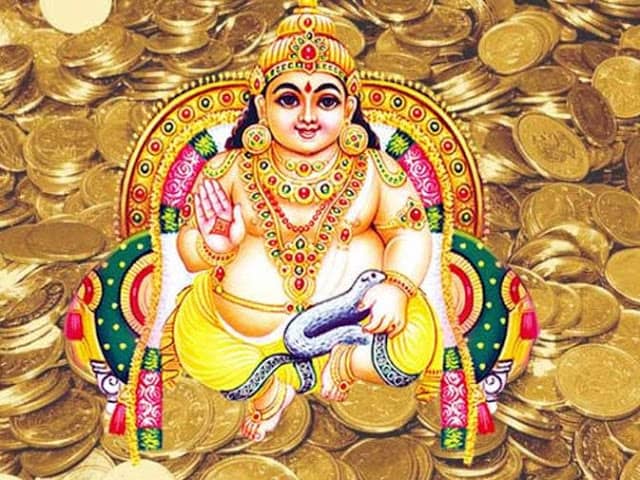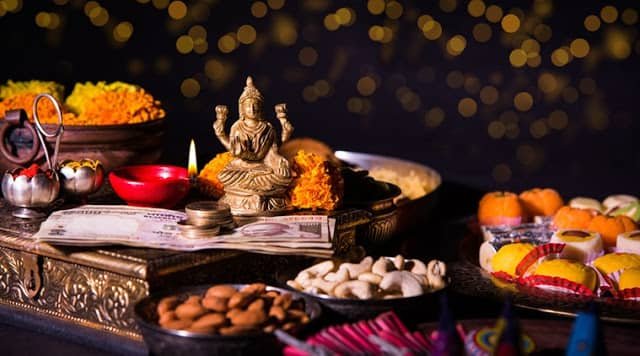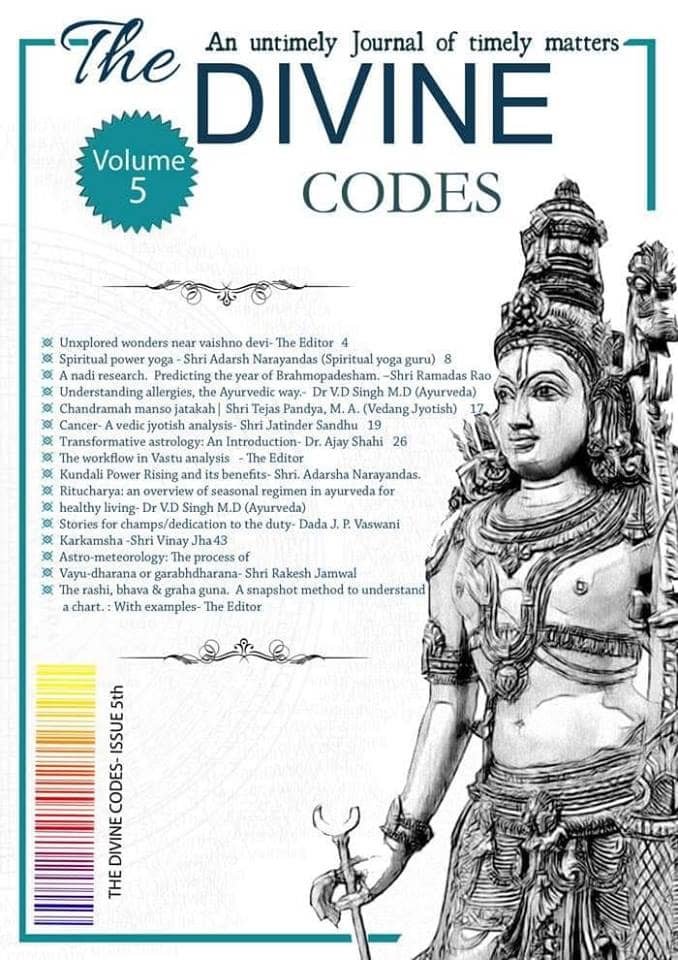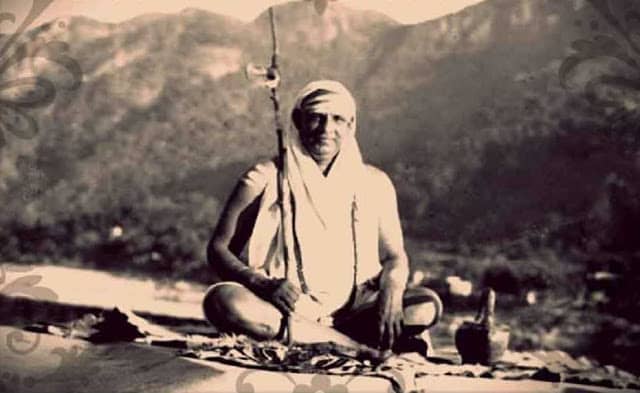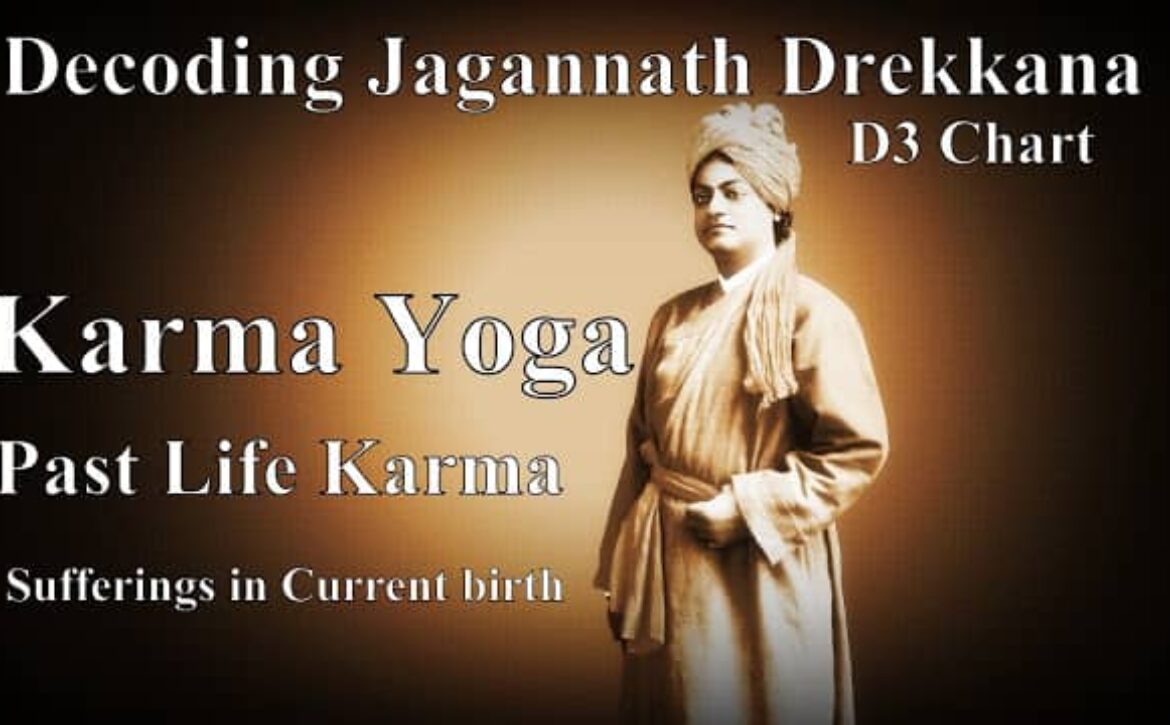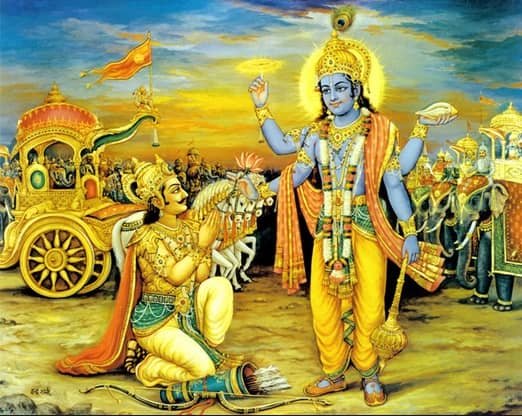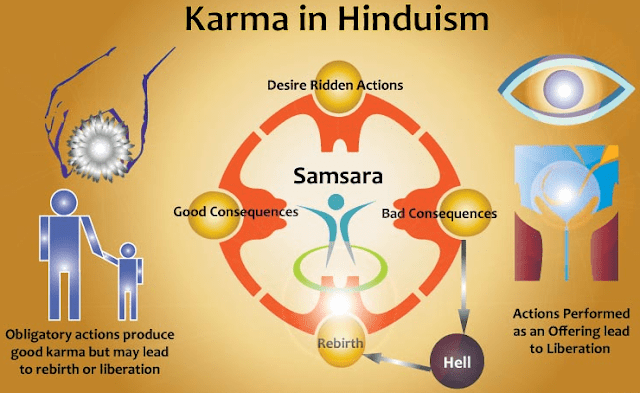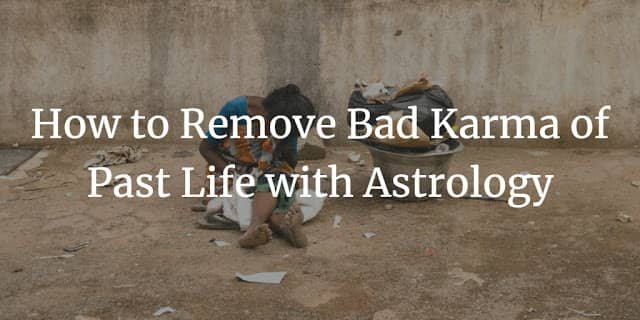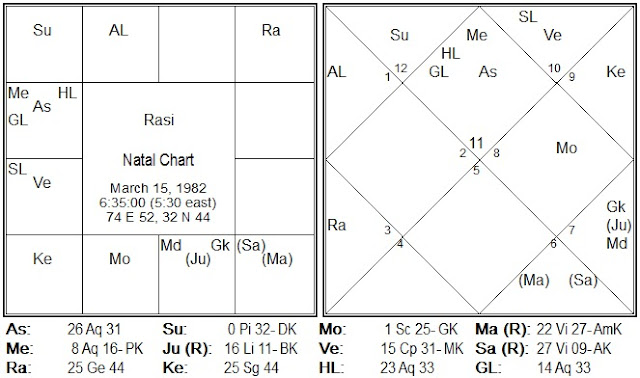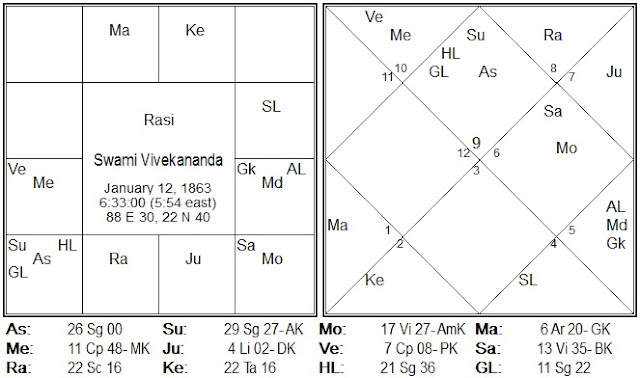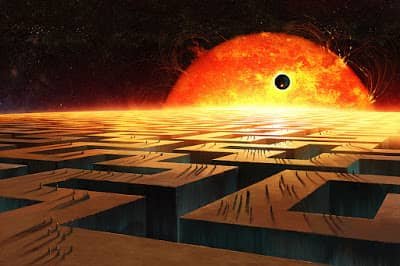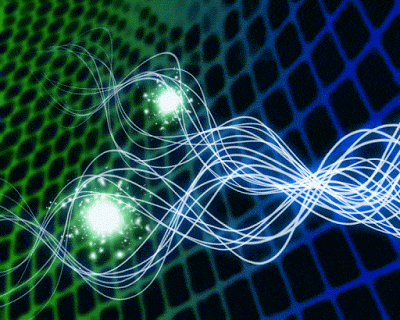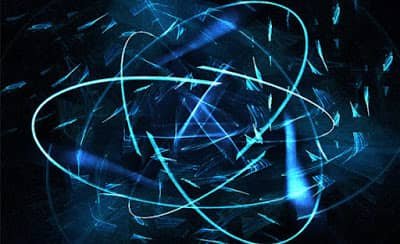BG 18.11: For the embodied being, it is impossible to give up activities entirely. But those who relinquish the fruits of their actions are said to be truly renounced.
The explanation was given by Swami Mukundananda:
Shree Krishna clearly says that the state of complete inactivity is impossible for the embodied being.No, one can stay away from any sort of action and work. one has to perform every sort of action in any case. However, Shree Krishna states here that if one can give up attachment to the fruits of actions, it is considered perfect renunciation.
Bhagavad Gita: Chapter 18, Verse 27
रागी कर्मफलप्रेप्सुर्लुब्धो हिंसात्मकोऽशुचि: |
हर्षशोकान्वित: कर्ता राजस: परिकीर्तित: || 27||
rāgī karma-phala-prepsur lubdho hinsātmako ‘śhuchiḥ
harṣha-śhokānvitaḥ kartā rājasaḥ parikīrtitaḥ
Translation
BG 18.27: The performer is considered in the mode of passion when he or she craves the fruits of the work, is covetous, violent-natured, impure, and moved by joy and sorrow.
The explanation was given by Swami Mukundananda:
” Karmas or work are described according to the nature of the doer and categorized into three parts majorly; Satvik, Rajasik, and Tamasik. The sāttvic workers are motivated by the desire for spiritual growth, the rājasic workers are deeply ambitious for materialistic enhancement. They do not realize that everything here is temporary and will have to be left behind one day. Agitated with immoderate rāg (desires of the mind and senses), they do not possess the purity of intention. They are convinced that the pleasure they seek is available in the things of the world. Hence, never satisfied by what comes their way, they are lubdhaḥ (greedy for more). When they see others succeeding or enjoying more than them, they become hinsātmakaḥ (enviously bent on injury). To fulfill their ends, they sometimes sacrifice morality and hence become aśhuchiḥ (impure). When their desires are fulfilled they become elated, and when they are daunted they get dejected. In this way, their lives become harṣha śhoka anvitaḥ (a mixture of delights and sorrows).”
Bhagavad Gita: Chapter 5, Verse 14
न कर्तृत्वं न कर्माणि लोकस्य सृजति प्रभु: |
न कर्मफलसंयोगं स्वभावस्तु प्रवर्तते || 14||
na kartṛitvaṁ na karmāṇi lokasya sṛijati prabhuḥ
na karma-phala-saṅyogaṁ svabhāvas tu pravartate
Translation
BG 5.14: Neither the sense of doership nor the nature of actions comes from God; nor does he create the fruits of actions. All this is enacted by the modes of material nature (guṇas).Commentary
The explanation was given by Swami Mukundananda ;
In the above-mentioned verse, the word Prabhu has been used for God, to indicate that he is the Lord of the world. He is an omnipotent and controls the entire universe. He conducts the activities of the universe, he remains the non-doer. He is neither the director of our actions nor does he decree whether we will perform a particular virtuous or evil deed. Had he been our director, there would be no need for elaborate instructions on good and bad actions.
All the scriptures would have ended in three short sentences:
“O souls, I am the director of all your works. So you do not need to understand what good or bad action is. I will make you do as I wish.”
Similarly, God is not responsible for our getting stuck with the sense of doership. If he had deliberately created the pride of doing in us, then again we could have blamed him for our misdoings. But the fact is that the soul brings this pride onto itself out of ignorance. If the soul chooses to do away with ignorance, then God helps dispel it with his grace. Thus, renunciation of the sense of doer ship is the responsibility of the soul. The body is constituted of the three modes of material nature, and all actions are performed by the modes. But out of ignorance, the soul identifies with the body and becomes implicated as the doer of actions, which are in fact done by material nature (verse 3.27).
Conclusion:
From all that we have found ultimate goal or motive of any soul is Self-realization from all sorts of Karam yogas or spiritual paths, which are majorly discussed in the Bhagavadgita in most of the chapter and it is the only purpose why a soul is kept taking on birth and keep doing the Karma and experiencing the phala for same until and unless soul becomes totally purified from every sort of actions and causes. Astrologically, Jagannath Drekkena Chart along with Privritti-traya Drekkana is widely used to understand every sort of karma one has to perform in the material world.
Understanding Karma Yoga?
At the opening of the Third Chapter, Arjuna is confused by Krishna’s instructions in the previous chapter.
He has misconceived that Krishna’s telling him to control his senses and fix his mind and intelligence on the Supreme is incompatible with the performance of the action. Therefore he questions why Krishna is requesting him to engage in warfare (1–2). In response, Krishna explains karma-yoga, the performance of actions free from desire for selfish, fruitive gain and dedicated to the Supreme (Krishna) (3–35).
(Source: Speaking tree)
For More understanding of Karma Theory, Checkout the article on Karma in Astrology :
https://vedicsiddhanta.in/2016/04/the-karama-theory-mystery-of-past-bir.html
Karma and Liberation:
Karma, or fruitive work, brings both material enjoyment and material suffering. Whether the results of the action are pleasant or unpleasant, however, they bind one to the bondage of repeated birth and death in the material world.
Krishna explains further that inaction is insufficient to save one from material reactions (and subsequent bondage to the material world).
By nature, everyone is forced to act. Even to maintain the physical body, one must work.
Therefore, one should work in a way that will not further entangle one in material bondage but will lead to ultimate liberation.
That art of work is karma-yoga; working and acting under the direction of the Supreme (Vishnu or Krishna) for His satisfaction.
(Source: Speaking tree)
Why sinful acts:
In the last section of this chapter, Arjuna asks, “By what is one impelled to sinful acts, even unwillingly, as if engaged by force?”
Krishna answers that it is lust (material desire) :
the “destroyer of knowledge and self-realization”, which incites sinful acts, and He prescribes the method to conquer it: sense regulation inspired by spiritual self-knowledge.
(Source: Speaking tree)
Understanding Karma Phala and Past life astrology

What is Drekkana and how Jagannath Drekkana is different from the usual Drekkna chart?
In the Current article, we will study the Jagannath Drekkana along with D1 and D9. Generally, D3 or Dresh-Kana, drekkana has a root connected with the word Darshan which means seeing or visualizing objects those are apparent and hidden in nature. Kana means the corner and in the astrological language, it speaks about the Trikonas or trine.
Thus, the word Drekkana represents the division where the sign, trine speaks about the Apparent and hidden personality and nature of the native chart.
Mathematically, The Drekkana is1/3rd of the divisional chart and it has a deep link with the 3rd house, as the 3rd house is falling in the 8th from the 8th house which shows roots connected with the 8th house. Generally, Drekkana is calculated by dividing each sign into 10-degree segments.
Planets those are falls, in the 1st, 2nd, or 3rd division of each sign, are then placed in the Drekkana Chart in Trines ( the 1st, 5th, or 9th ) from that sign. In every Drekkana chart, every sign is divided into 3 equal parts of 10 degrees each of which is known as Drekkana.
The first Drekkana of every sign ( 0-10) would be of the same sign. the 2nd Drekkana ( 10-20) of every sign would fall in the 5th sign from it. The last Drekkana (20-30) of every sign would fall in the 9th sign from it. When a sign is divided into three parts each of them constitutes a Drekkana.
The Jagannath Drekkana starts from the Movable sign in trine to the sign. For a movable sign, drekkana would start from the sign itself, for a fixed sign, drekkana would start from the 9th from the sign and for dual signs drekkana would start from the 5th from the sign. Please follows the below-mentioned Scheme for calculating Jagannath drekkana
Jagannath Drekkana Calculation
For Predictive purposes, Jagannath Drekkana is used for understanding Deep-rooted karma phala those are results of the actions one’s soul has done in its previous birth and also speaks about the What soul has to do in current birth or to know about the sole purpose or what native has to do, in order to fulfil the task assigned to him or her by the divine master based on his previous birth karma. Jagannath Drekkana works based on the tripod of life, i.e Lagana is seen for the physical body creation ruled by the Lord Bramh and the moon is seen for the mind and the Sun is seen for the Atma, soul).
The body comes and goes in this world because of the karma we did and keep on uniting or exiting from the body, what matters is our actions which decide our birth and death. Based on one’s action when one is dying we see where one can go and in the same case when one takes birth we can see where one comes from, That Stoppage point shows the Loka where one goes and comes back in this body which decides on the time of the death and birth. Each planet and Sign decides at what loke one came from and one goes in. Below is the chart for the same:
At the time of death and Birth chart, we can find out the position of the sun and moon and their strength( lordship) and their placement in the chart to see the previous and future destiny of the soul.
1st Drekkana of each sign is called Karma Drekkana, 2nd is called Bhoga Drekkana and 3rd Drekkana is Called Nasha Drekkana ruled by the Devarishi Narda, Maharishi Agastya, and Bramha Rishi Durvasa respectively.
Moveable signs represent Rajas Guna, and Maushya and the presiding diety is Lord Bramha and Rishi Durvasa. fixed signs represented by Tamas Gunna, Rakashas Gana, and the Presiding deity is Lord Shiva and Maharishi Agastya and dual signs represented by Satva Guna, Deva Gana, and the presiding deity are Vishnu and Devarishi Narada.1st Drekkana of Dual signs is karma drekkana represented by devas and Maharishi Narada.
2nd Drekkana of moveable signs represents bhoga ruled by the lord shiva and the person one born here should practice maximum discipline to avoid falling from his dharma and karma.
3rd Drekkana of fixed signs have raja guna ruled by the Lord Brahma and people born in this drekkana should live unattached life else they will keep on getting in birth and death cycles to reap their fruits of actions.
( Source and information; Varga Chakara, Sanjay Rath )
That is what we had studied in the Karma theory and we called it Karma yoga or the sole purpose of this birth. This is the only reason why Jagannath drekkaṇa is the most important divisional chart to understand the task assigned or the life direction of the native for its success or failure, to understand all sorts of fluctuations one may face in current birth.
Even it shows, what Native has brought back from the past life that one has to bear it or go through it in current birth. This can be understood in a way that what is the root cause of this birth actions as a result of the past karma done by the soul.
It is more about understanding one’s Karma and actions related to self, for self-growth and self-evaluation, and bearing pain or suffering for the next journey of the soul. To understand one’s actions and karma phala of one, the focus is on the third house and its lord, it will speak more about the nature of karma yoga and the phala connected with it.
Step 1: What you have to do

1) First, of all, we have to study or see the 3rd lord of the Natal chart which acts as Karyesa then see where the Karyesa is placed in the Jagannath Drekkana chart (D3) and which house does it lord.
2) The placement and houses lorded by the Karyesa of the D1 in D3 indicate what is the prime area where one has to go through it, it could also indicate one about its suffering or the redemption one can get from his past life karma.
3) Meanwhile, any Planet in the 3rd house of the D3 Shows what the native has to do in the future for fulfilling the goals of life that have been assigned to the native.
4) Placement of the 3rd lord of D3 shows what is the Karma Phala that one brought from the past life and also shows how he has to manifest or perform in this current birth, spiritually or materially if the 3rd house of the D3 is vacant.
Step 2: Check the Tattava or nature of the Signs in the D3 Chart :
All the Chara Rashi’s shows – Bhu-loka (Earth),
All the Sthira Rashi’s shows – Bhuva-loka (Grahas or Deities of the Solar System),
All the Dual Sign shows – Swarga-Loka (Higher Gods and Deities),
Bhu-Loka (Chara Rashi), shows the earth and any planet in it show suffering due to bad karma one has done on earth in the previous life to someone. This also indicates that sufferings are dynamic in nature and it can go and come on the journey of life during its Dashas, Bhukti, and Pratyantar dashas. Basically, it shows about Suffering those are temporary in nature and shall not carry forward till the whole life.
Any Planet in the Sthira Rashi (Bhuva-Loka), shows the sufferings that one gets via the anger or affliction of the planetary deity toward the native actions in the past life. Any planet in the Dual Rashis (Swargaloka) shows that Gods or Higher Deities are not happy with the native previous birth actions. It majorly shows the anger of the higher god toward the person and affliction is at the Nakashtra level (Health). Here, there is no redemption from such Suffering and painful experiences. The motive could be lying in the eternal growth of the native or future spiritual manifestation of the soul.
Suffering one gets at the Bhu-Loka is changeable and temporary in nature and we have to check it from the lagna level (Body- Tanu – Ascendant) in the form of other people, relationships, and nature we might receive from them. It’s more like the influence on us via others (More it is like Rinanubandhan) who are closely associated with us.
Suffering one gets at the Bhuva-Loka is at the Aatmic level (Soul realization, Sun Lagna). One might get in the form of wealth, Finance, and Soul transformations which are all represented by the nature of the sun (Sun Shows Wealth of any type i.e knowledge, Aatmic Gyan, Financial wealth, Wealth from Children’s, Name, Fame, and Status etc). Wealth could be in any form as might also show one of the Punya of the past life too. Suffering one gets at the Swarga-Loka shows realization at the subconscious Level (Mind, ruled by Moon), it mostly indicates suffering one will face via mental actions, via Manan and it is mostly seen at the nakshatra level and majorly affects the health of the native and it is impossible to redeem in any case.
Now, Let’s understand the Jagannath drekkena chart by a Few example charts:
Chart 1: Author of the Article


Decoding Past Birth Root cause – Karma Phala

In the Above mentioned natal chart, Karyesa is mars being the 3rd lord in Aquarius Lagna, also being Chara Amatya-karaka placed in the 8th house in Virgo Sign (Dual Sign) with lagnesha Saturn, also Atma-Karka, clearly shows that the native has born to explore, research and write about the hidden meaning of traditional knowledge (Jyotish, occult, and Mathematical Sciences) in a new shape or modern form with the more technical, scientifical or analytical approach via writing down journals or research paper socially.
As Both the Ak(Mars) and Amk (Saturn) are Retrograde in nature, this shows about the strong desire of the native from the past life to keep on exploring, researching, and presenting the new idea about traditional knowledge to the masses for their well-being in a more profound way astrologically.
Now, lets check in D3 chart, Mars being Amk and Karyesa is placed in the 4th house with retro (Ak) Saturn in dual Sign of Virgo (Sign of Swarga-Loka), having rashi drishti of Exalted Nodes from Gemini and Sagitarius sign (Rahu and Ketu- shows Deep rooted karmic Phala and also shows Technically sharp intellcual and Research oriented tendency) Shows that native is born for Serving (Saturn being Karka of Service and also Retrograde Ak – it is the deep desire of the native to serve other that native got from the previous birth)others via traditional learning and knowledge and decoding literature (Sign of Virgo – shows about Literatures, Generalism, Writing, Research or Journals or scholarly articles based on Scientific parameters) into new form in a more technical and scientifical way, as Retro Saturn (shows Strong Desire brought from the past life) being AK and Lagnesh of the Natal chart and also 9th lord of the D3 is conjoined with Karyesha Mars in dual sign sharing vargottam placement.
This clearly shows hardcore passion and learning as Keryesa is sharing the same vargottam sign placement in both D1 and D3 charts. Here, the Native soul’s purpose is very strong for future birth, that he has to serve others via his Technical, traditional knowledge, and writing capability in Jyotish and occult. But it also shows one will also suffer regarding his health matters and might feel issues in his work, routine job, and career matters.
As Karyesha is in the dual sign – Swarga Loka, the Higher god or deity is in anger state toward the native and there is no redemption from the suffering one might face in his life, as Karyesa Mars being Amk and Ak both are in the retrograde state. This clearly shows that regarding native has to face self-evaluation, self-experience, and go through the phase of self-realization via his Work and passion and it might disturb his Mental, Physical health (Abdomen ruled by Virgo) and Career related issues.
As Karyesa is the 6th and 11th lord, the 8th lord from the Karyesa (Virgo) in the D3 chart (Suffering would be related to 6th (Routine job, Service and health) and 11th house (Financial gains) matters), So overall native will face issues regarding his health and career matters and one has to work hard and need to accept his destiny accordingly with no choice left, as there is no redemption given to the native.
Here Remedies won’t work. The most important part is the Virgo sign is the native pakka Lagna Rashi too, which also shows matters related to health.
Karma Yoga of the Future

For future actions or direction of the native, this chart shows strong karmic root and karma yoga in this life, and for that, we have to look for the 3rd house of d3 which is vacant. In that case, we have to look for placement of 3rd lord in the d3 chart.
In D3 chart, lord of the 3rd house is Sun who is placed in the 2nd house with the moon getting Rasi aspect from the Venus and Jupiter from 9th and 12th house, clearly shows one has to be responsible regarding 2nd house matters (Family Wealth, Values, Family Responsibility toward parents) and one has to be spiritually align toward higher path of Bhakti or eternal devotion, as both the sun (Ruled by the Para Vidya – it is knowledge of higher spirituality and divine path, lorded by the Sun, who is the natural atmakaraka)and moon (Apara Vidya – is the knowledge of the material realm and is lorded by the Moon who is natural ruler of the mind and shows resources) are involved here in the Sign of Cancer (Sign of basic learning, education, and Bhakti experience) with the rasi aspect of Jupiter (all form of Non-material Knowledge, including Guru guidance, and teaching – shows all form of Shashtric knowledge those are spiritually in nature including jyotisha – the light of illuminating darkness) and Venus (Knowledge of those are governed by the Material things including healing, Mantric, Tantric or siddhis etc).
Conclusion:
This clearly shows that a native has to learn, serve and share his spiritual experience via Jyotish, Occult, and healing sciences after experiencing it by self and that would be his “Karma of the future Birth” to help, lift and guide others in a right direction via the modes of deep spiritual experiences and knowledge. For accomplishing this task native need to utilize his knowledge and learning in Jyotish and Healing sciences and later needs to share it via the modes of technical writing and research Journals.
Chart 2: Swami Viveka-Nanda

In the Swami Viveka Nanda chart, the 3rd house of the Natal chart is ruled by two lords Rahu and Saturn and both Saturn and Rahu are somehow interconnected with each other. Saturn being (BK- Bharti Karka) is in the 10th house from the Sun (AK) with the 8th lord Moon and Saturn is aspecting Rahu from the 3rd house that shows deep-rooted Karmic task assigned and given to Swami Viveka Nanda for the well-being of the society and mankind by Karma Yoga (Moon and Saturn in 10th – A yogi is born).
Saturn is all about studying deep-rooted karmas and experiencing and realizing deep karmic roots for uplifting those who are in need. It’s a good yoga of learning Karma and its pahla by self-realization and, as in Swami Vivekananda’s case Saturn is the 3rd lord associated with the 8th lord moon, so it is all about finishing the task of past birth assigned to him for liberating many souls those are directionless or unguided from the present birth tasks.
Karyesha (3rd lord of the D1) is Saturn and is placed in the 6th house in Sthira Rashi of Taurus (Sign of Wealth, family & values). As Karyesha is placed in the fixed sign, Suffering is at the Bhuva-Loka, which means one who realized at the Soul level, here Soul experiences are mainly ruled. It is about learning at the Atmic level (Soul realization, Sun Lagna) and one gets in the form of wealth, Finance, and Soul transformations. Here Wealth could be in any form as might be one of the Punya of the past life too.
In Swami Vivekananda’s chart, Graha (Planetary deity) is angry toward him and affliction is at the graha level and he will suffer on account of planetary anger. In D3 chart Saturn (BK- shows Guru teaching for the karma yoga of the future) is placed in the sign of Taurus (Wealth and family values) with Moon (Amk – Task given to him) and Mercury clearly shows Swami Vivekananda has to leave or sacrifice family life or follow the path of Moksha or liberation, or on account of his family wealth.
This will happen only when he will meet his guru and will realize his Soul purpose, as Saturn being Bk also the lord of the 2nd and 3rd house in both D1 and D3 charts placed in the 6th house with Moon and Mercury. Swami will accomplish this task via self-learning, self-realizing it via Manan, or practicing it via deep self-questioning or via meditation. As in both D1 and D3 charts, Karyesha Saturn and other lord Rahu is placed in the sign of Pisces and Taurus getting the Rashi aspect from Jupiter and Sun (Ak).
As the 8th lord moon is involved here with Karyesha Saturn (BK), swami Viveka Nanda will realize this life Karma-Yoga after meeting his divine guru who would be a Kali or Devi worshipper (Saturn is with Moon shows Devi worshipper or deity who illuminates one’s darkness from the soul and karma) and then he will realize his life goal or would understand his task given via his guru teaching, guidance and he will undertake this task Via mediation – Manan (Moon is ruled by the Apara Vidya and also Amk too, shows all form of knowledge one experience, realize or one get it via manan or via senses and it includes all the worldly knowledge in any art and science, including the knowledge of Vedas, Vedanta, and Vedanga).
Apara Vidya encompasses the entire spectrum of ‘objects’, that is, anything that can be objectified by our senses or mind. Anything that can be ‘seen’ is an object of Apara Vidya. Under this category comes all our worldly knowledge. Science, arts, commerce, management, technical knowledges, etc.
Interestingly the teacher even classifies the knowledge of the Vedas and Vedanga’s in this category, because they are also a part of the limited & changing world in front of us. Apara Vidya is worth knowing because of various reasons. One, specialization in any one field of the objective world, helps us to serve our society & world better, two, the pursuit of knowledge disciplines our mind & intellect, so that we become capable of thinking deeply & properly, and last but not the least, this pursuit of Apara Vidya helps us to realize the ephemerality of the objective world, and thus helps us to get qualities of vairagya, etc, and also motivates us to look out for something more permanent in this ever-changing world.
The objective of this categorization is to indicate to us that however much we may know about the world outside, by this pursuit alone we shall never move towards omniscience. Apara Vidya shall help us to make a living, have a dignified & respectable life, and have a thoughtful intelligent mind, but never ever hope that you shall move towards omniscience. This is not the way for the fulfillment of such an aspiration.
This clearly shows swami Vivekananda’s eternal goal for this life is to awaken people who are misguided in the path of darkness to move toward balanced material and spiritual knowledge.
In the D3 chart, Karyesha is placed in the 6th house and is the ruler of the 2nd and 3rd houses showing that swamiViveka-Nanda has to accomplish this Karma yoga task via visiting too many places, communicating, via delivering the speeches, traveling or leaving his family life. As Both Jupiter and Venus are Aspecting it from the 11th and the 2nd house from the D3 lagna via Rasi drishti. He has to do this task via learning and experiencing every sort of material and non-material knowledge and he needs to travel across the globe to deliver it in many of the forms, as the sun being AK placed in the 8th from the Karyesha and lordship of the 8th from it, Jupiter also aspecting it shows that the, its a long-lasting task assigned to him for the well being of the society till his conscious soul is alive. Its an Atmic task given to him for uplifting mankind.
Final Conclusion: I hope from the above-mentioned example charts and understanding of the Jagannath Drekkana D3 chart, one can understand his karma yoga and find his soul purpose, and able to do his destined karma yoga for the future life.
Source and Reference guides :
- The Jyotisha Digest, “Analysis of Varga charts ” by Manoj Kumar Gupta
- Fundamentals of Vedic Astrology by Visti Larsen
- Jagannathh Drekkana by Visti Larsen
- http://www.vmission.org.in/vedanta/articles/parapara.htmhttps://asitis.com/3
- https://www.speakingtree.in/blog/summary-of-the-bhagavadgita-chapter-three-karmayoga
- Varga Charts by Sagar Publication
- https://www.holy-bhagavad-gita.org/chapter/2/verse/47
- https://www.holy-bhagavad-gita.org/w/karma-phala
Related Consultation: From our Research Panel
This session is meant for those users who want to understand & decode root areas of life issues connecting with Past life karma, Curses, Doshas, Karmic Debts, and Rinanubandhan which they have accumulated from past life karmas, deeds, actions, and sins and are manifesting in their present life in different timelines, age, and the cycle of dashes, transits and progressions of Karmic planets. Click on the below link to understand more about this consultation:
Link: https://vedicsiddhanta.in/store/Past-life-Karma-&-Spiritual-Consultation-Decoding-Karma-Curses-&-Rinanubandhan-In-Depth-Horoscope-analysis-90-Minute-Voice-Session-p533749481





